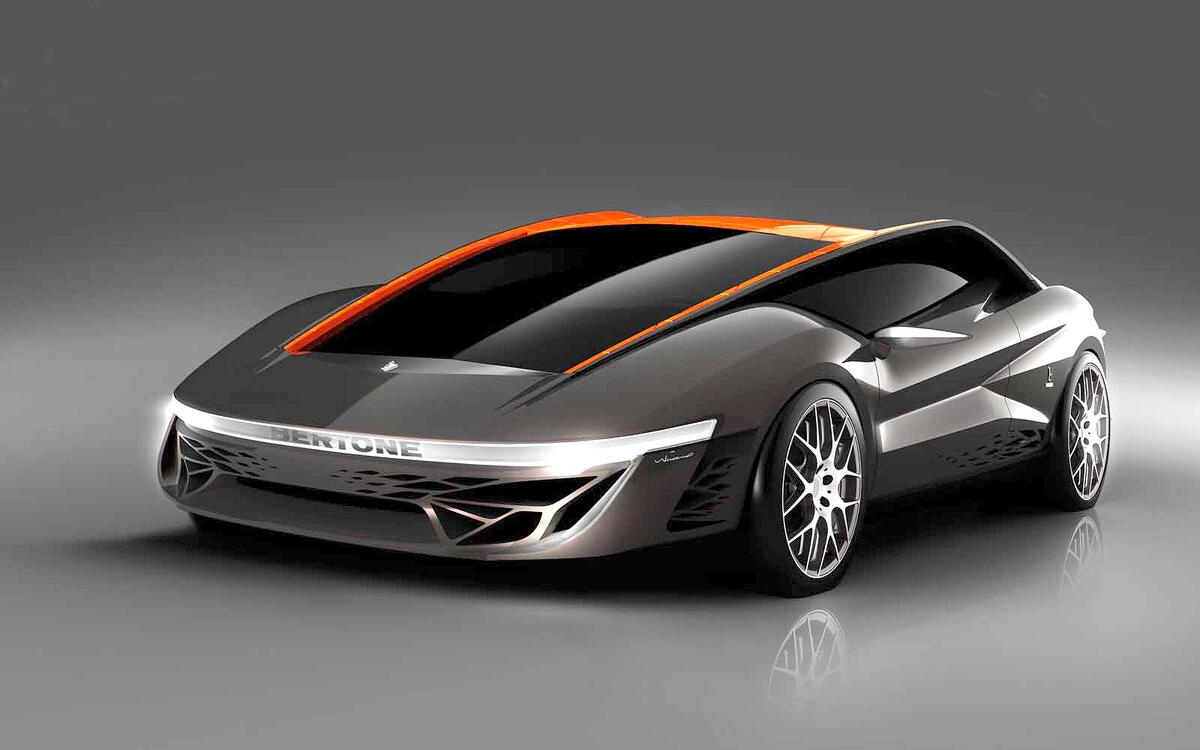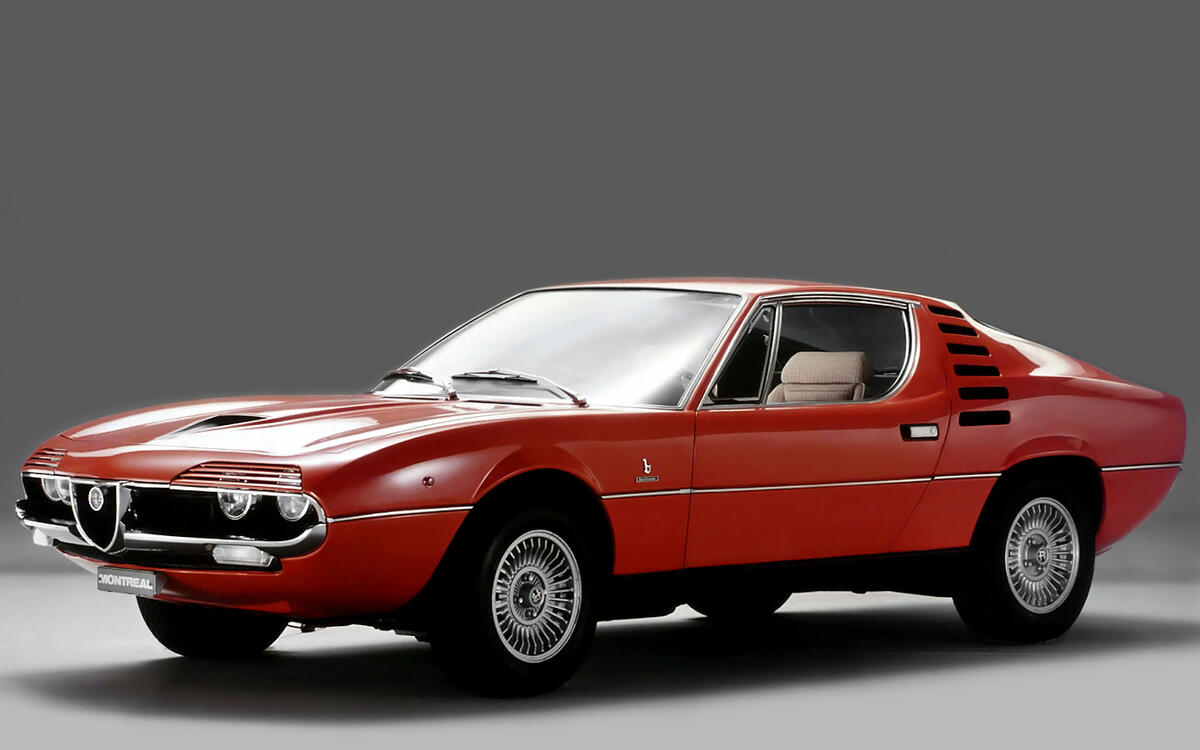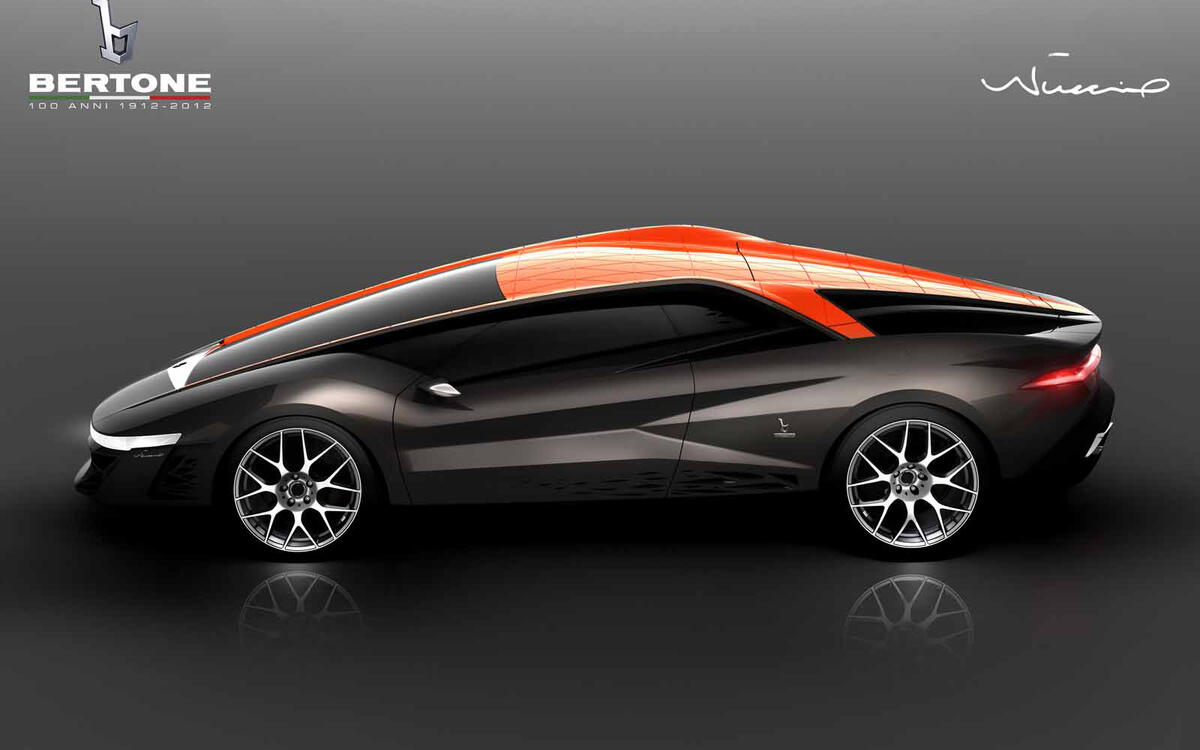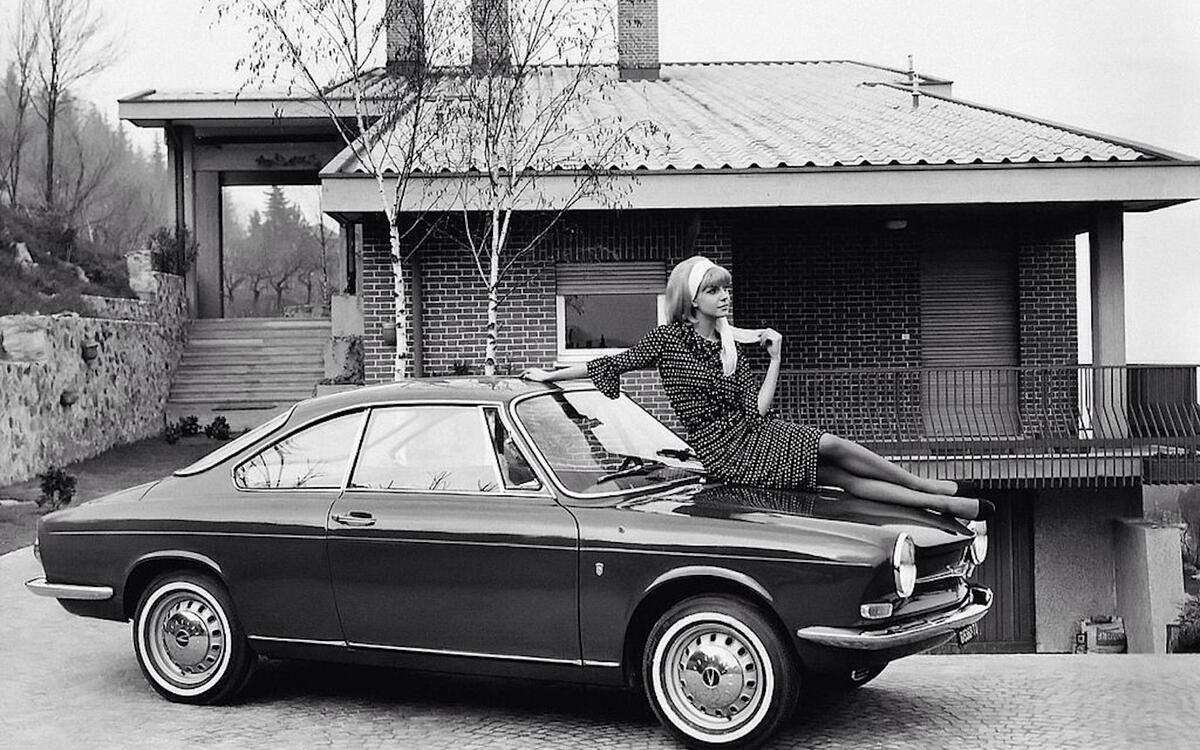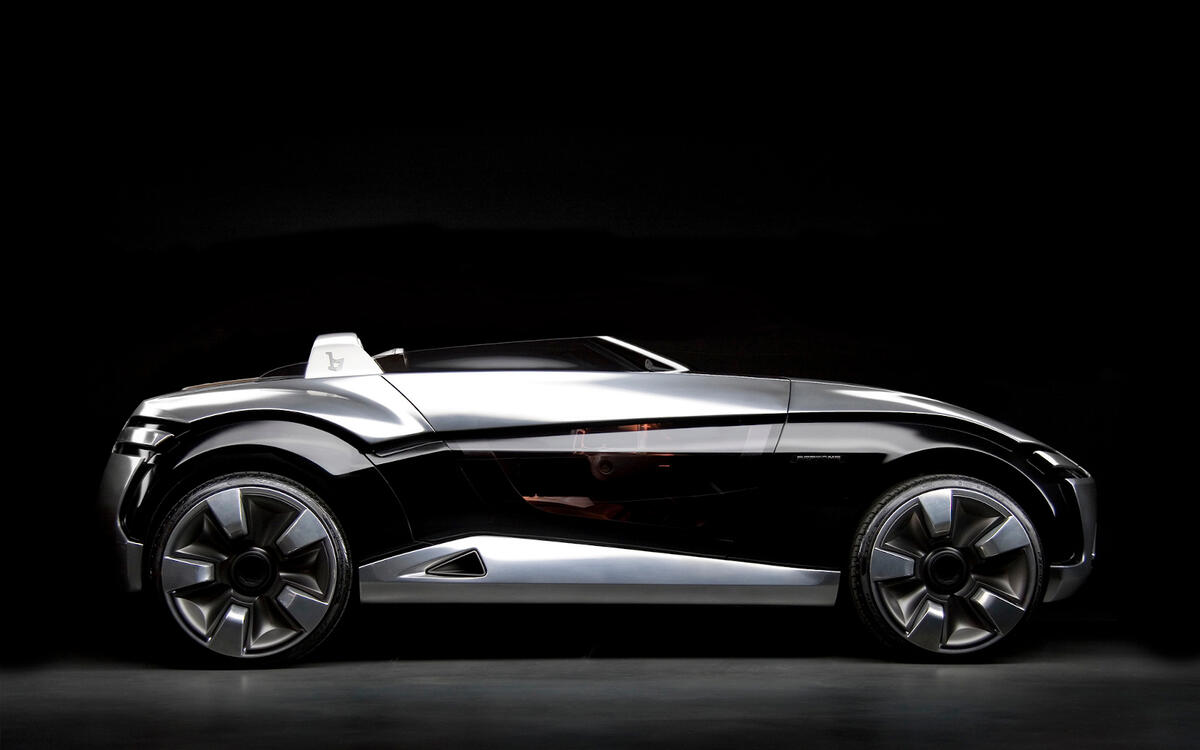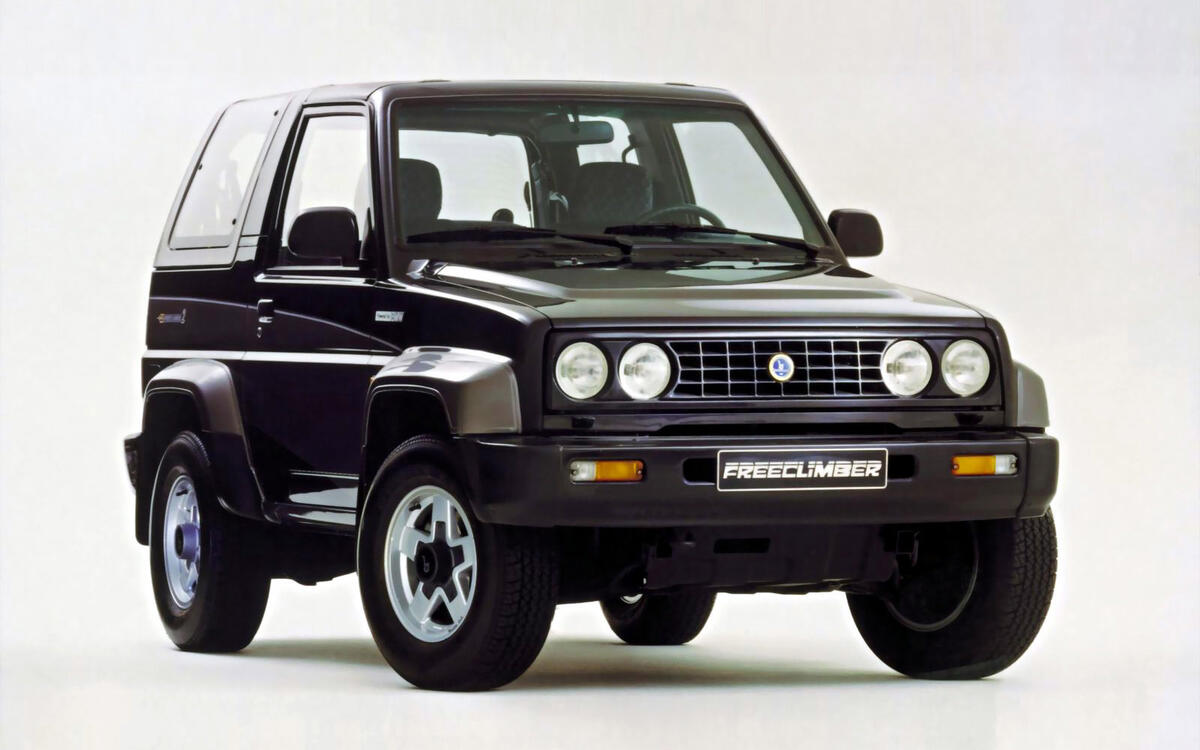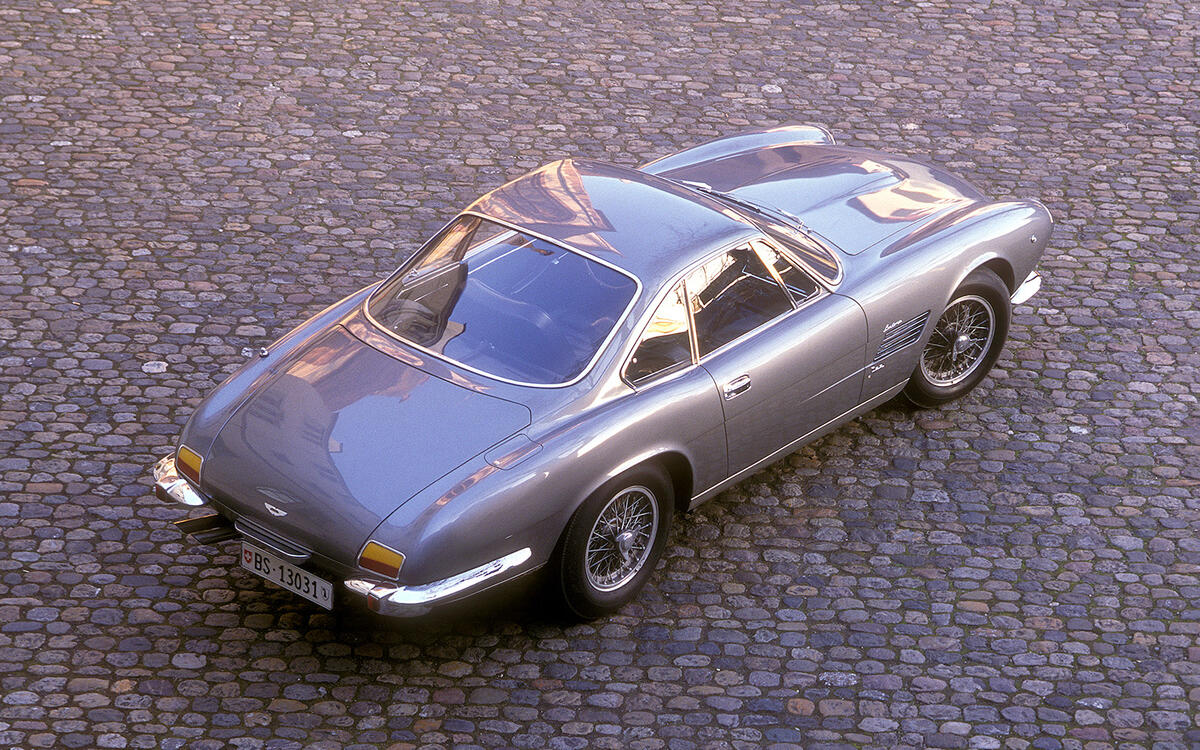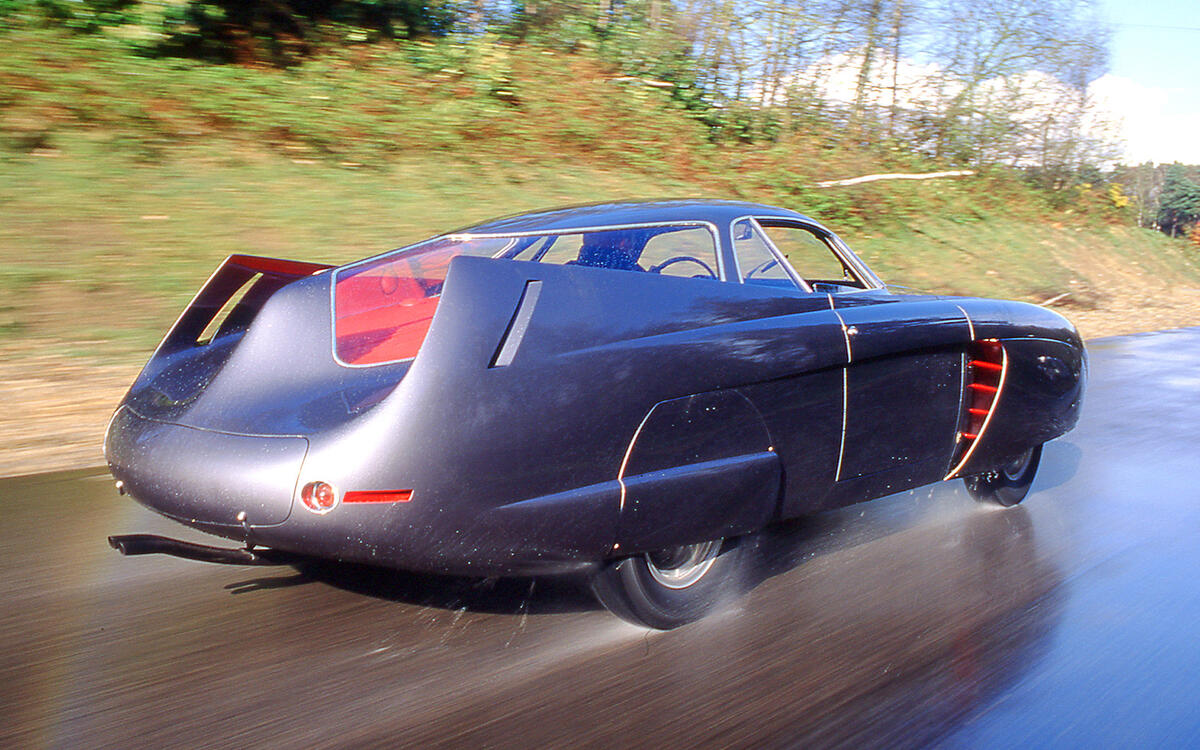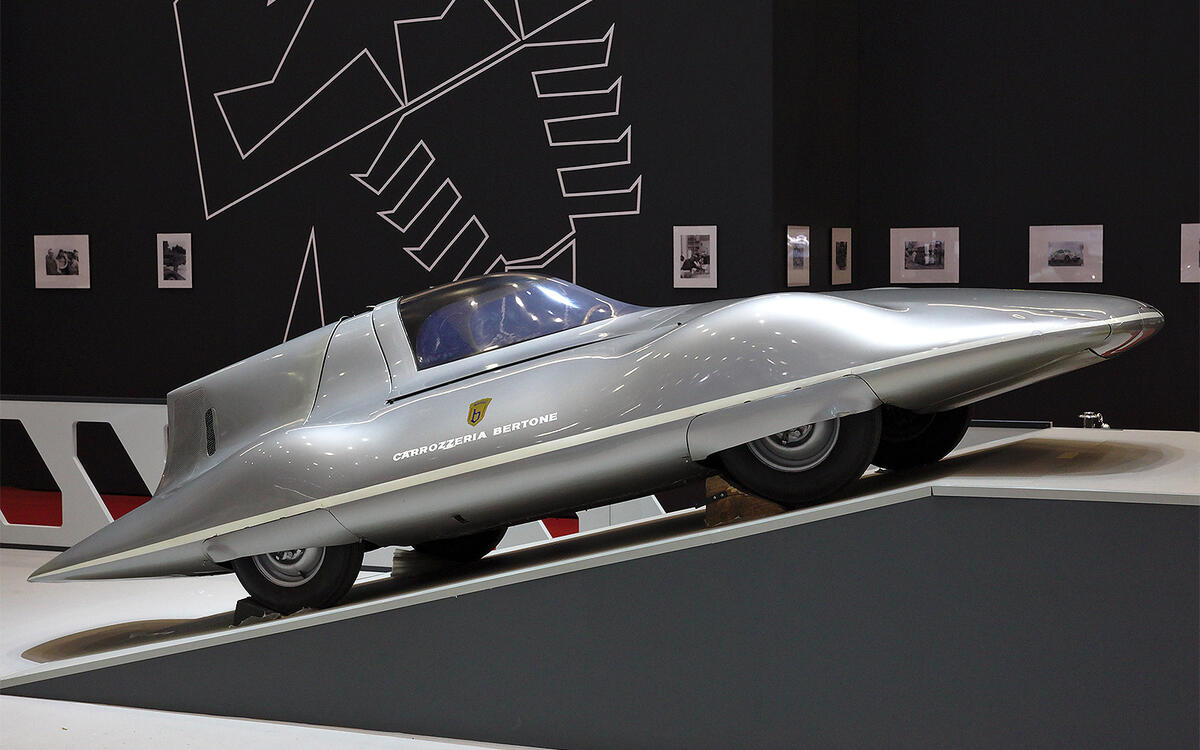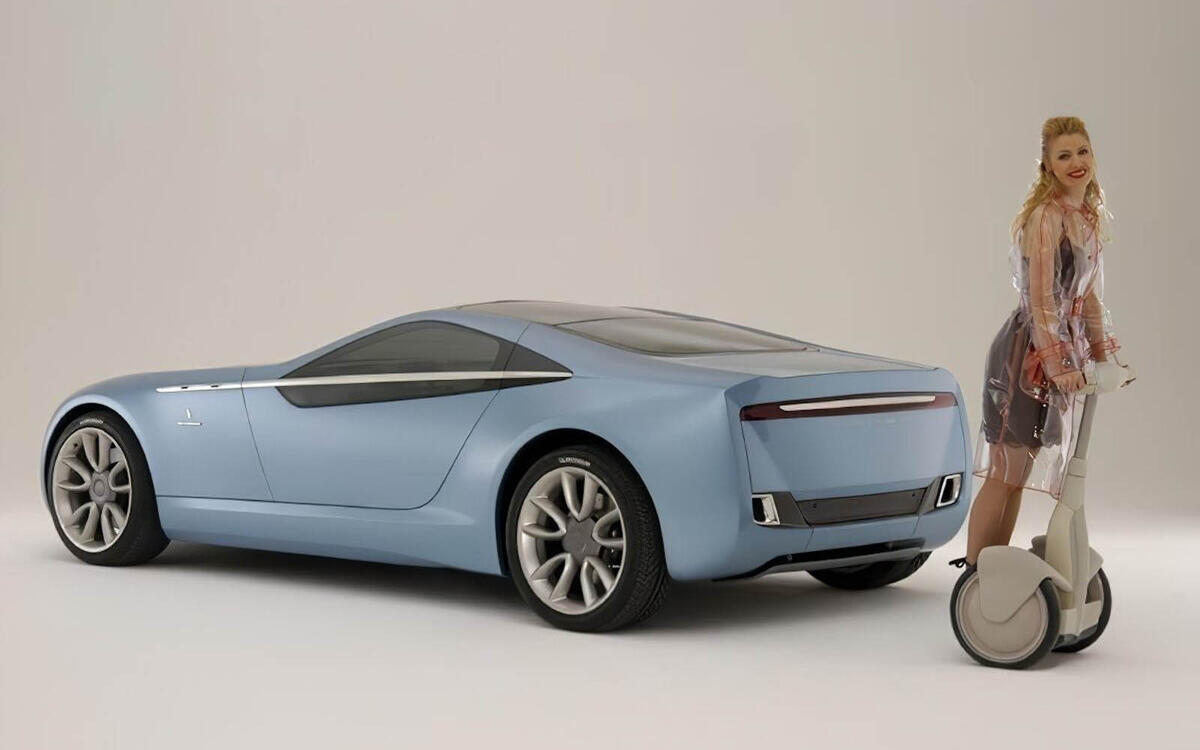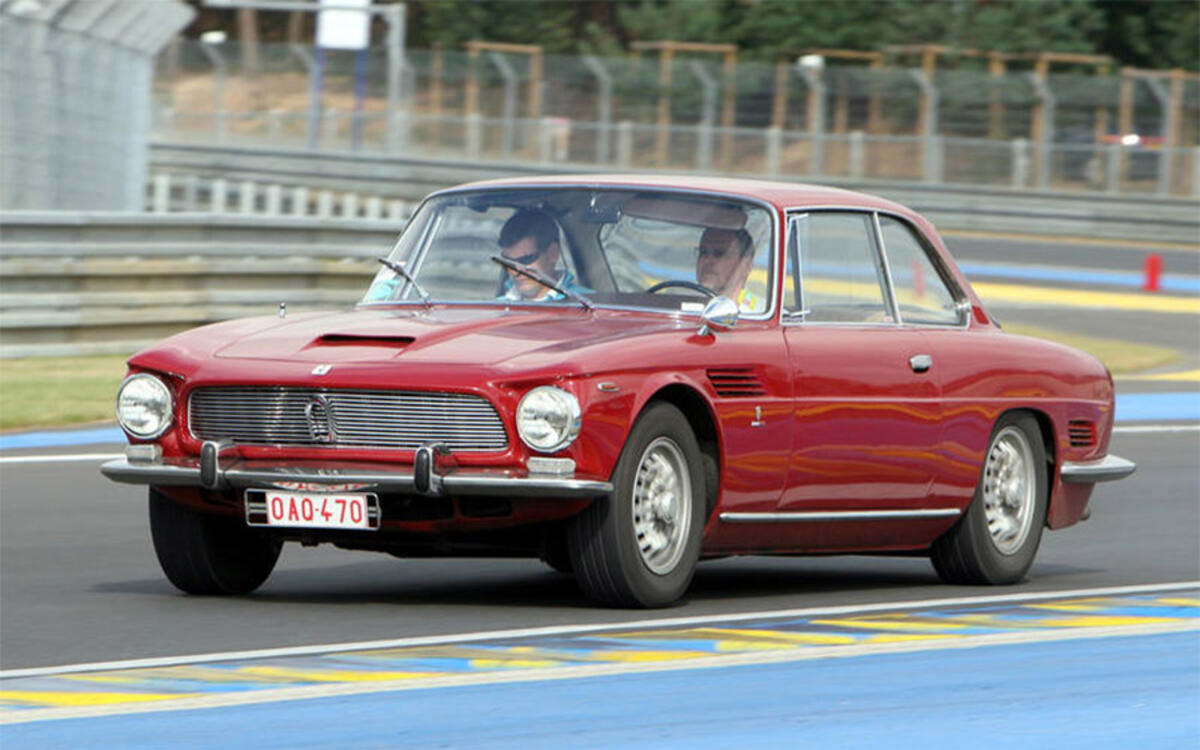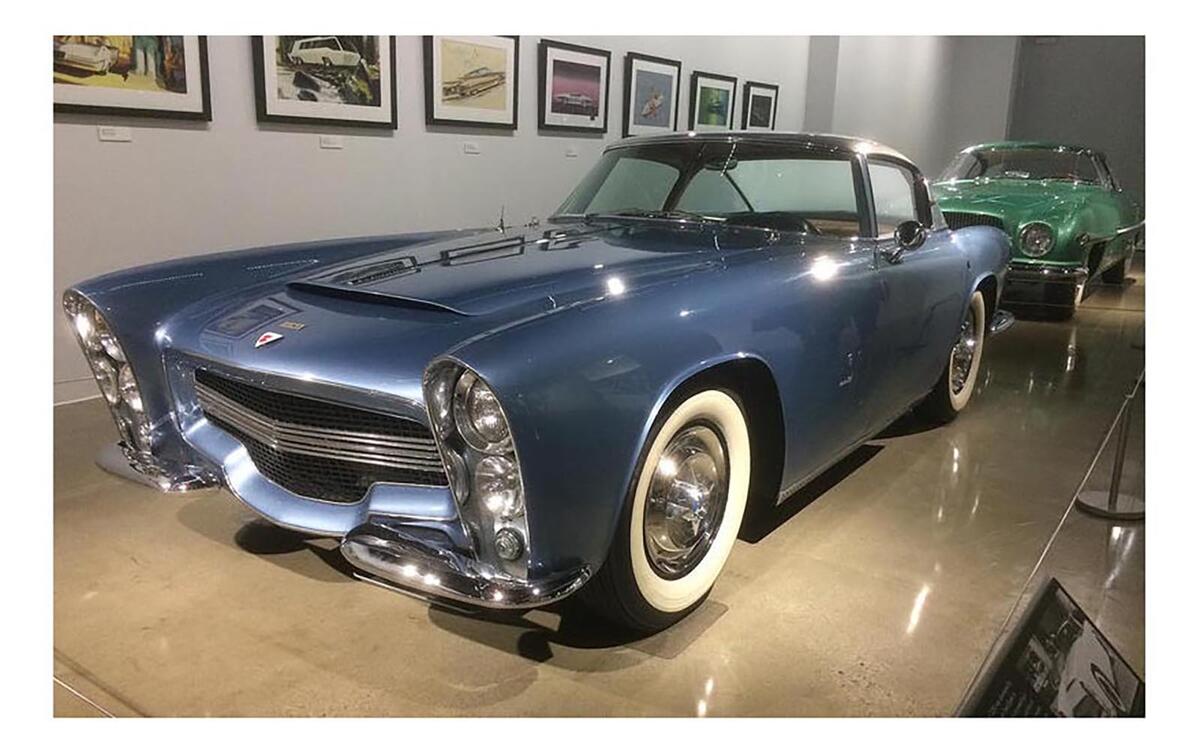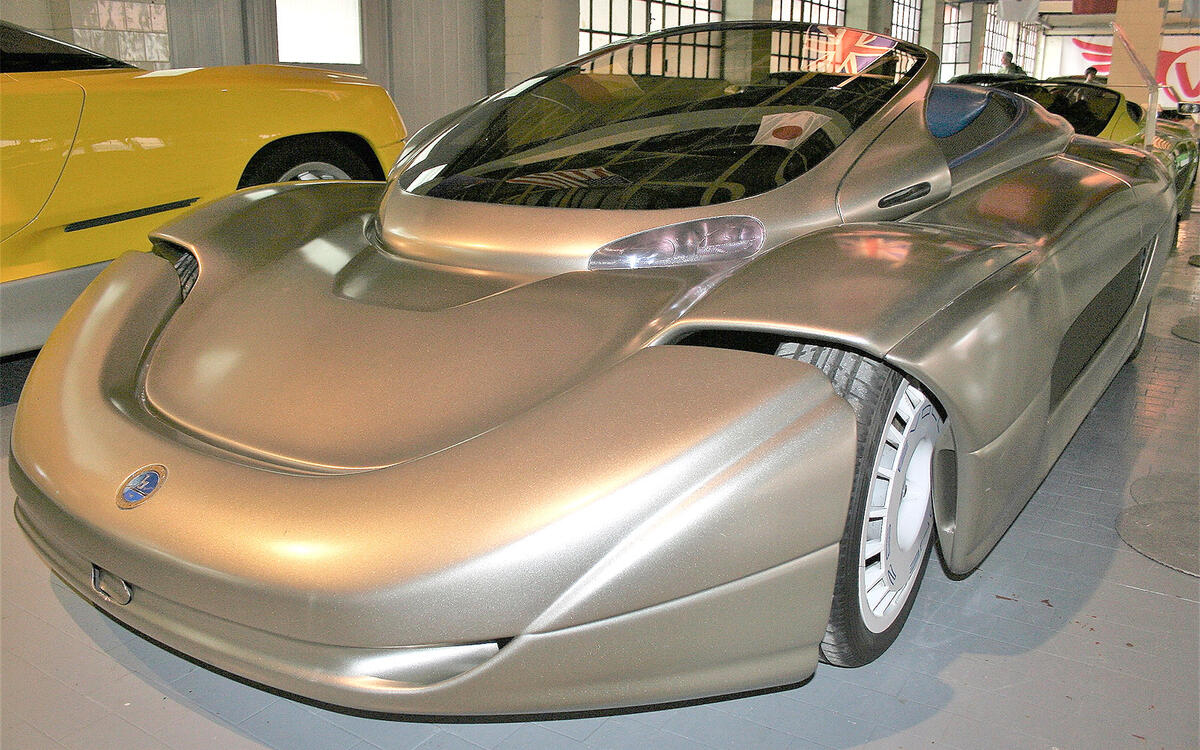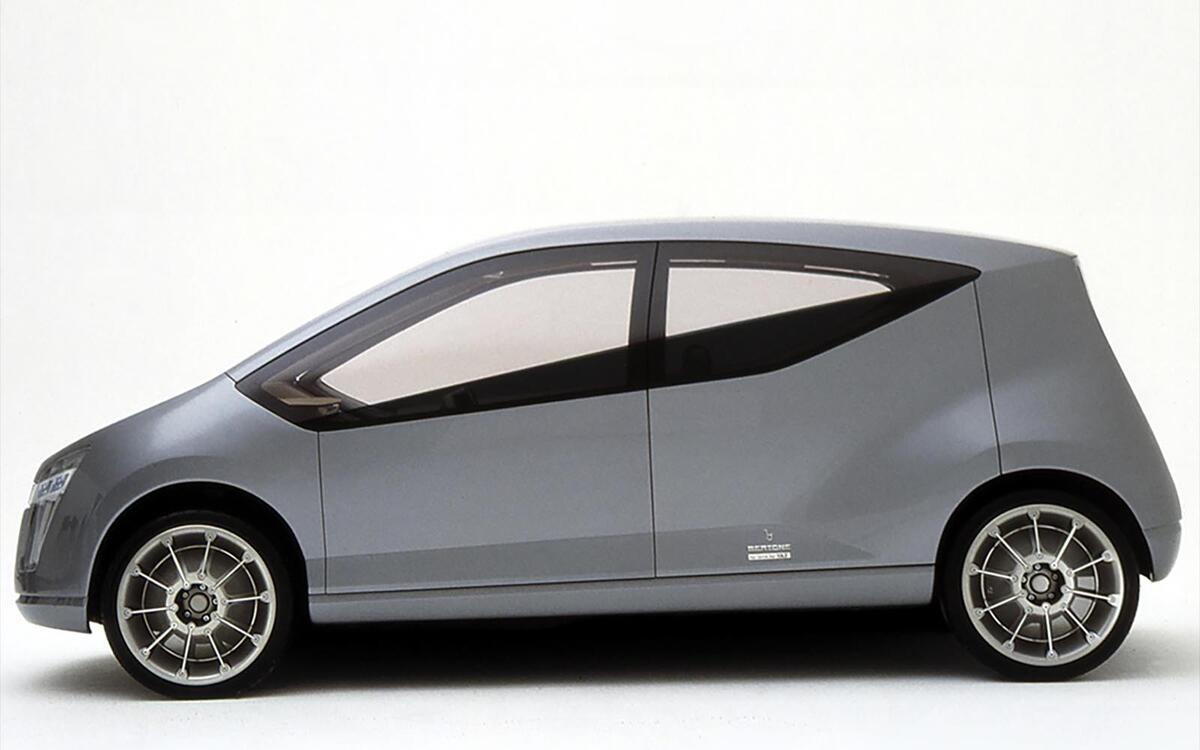 Slide of
Slide of
Once upon a time many car makers didn’t have an inhouse design function.
Instead, they would consult with an outside design agency, particularly for its more outlandish concepts. For many, that meant a trip to Italy, home to the world’s greatest car stylists and coachbuilders. And among them, one name stood out: Bertone. Founded in 1912, the company survived for 102 years before it went into bankruptcy in 2014.
Along the way, it’s designed cars for Lamborghini, Ferrari and a stable of mainstream brands. Some have been more successful than others. These are Bertone’s greatest hits - and a few that some people would rather forget:
 Slide of
Slide of
Alfa Romeo Montreal
Bertone’s Marcello Gandini (born 1938), the man who designed the Alfa Romeo Montreal – so-called as it was launched as a concept at Expo ’67 in the Canadian city – was born into art. The son of a Turinese orchestral conductor, he’s now considered a prince among automotive designers.
From the slatted headlamp covers to the louvred B-pillars to the Kamm tail, the Montreal is one of Bertone’s most recognisable – and best-loved – designs.
 Slide of
Slide of
Iso Grifo (coupé)
It’s scarcely believable that Giorgietto Giugiaro (born 1938) was just 25 years old when he designed the Iso Grifo in 1963. A two-seater coupé based on Iso’s earlier GT, the Rivolta, it was one of the earliest examples of Italian sports car design nous matched with US power – in this case the revered Chevrolet small block V8.
It remains one of Bertone’s most alluring designs – an enchanting combination of sharp edges, flowing lines and muscular proportions.
 Slide of
Slide of
Lamborghini Countach
Lamborghini’s beginnings may have been prosaic – its founder, Ferruccio Lamborghini (1916-1993) began his business reconditioning tractors left behind by Allied forces after World War Two – but in 1971 they unleashed a concept for a vehicle that would come to define the term ‘sports car’ to many.
The scissor doors may be the showboat of Gandini’s design, but his ‘cab forward’ concept to accomodate a rear mid-engine would have a pervasive influence on high-end car design in ensuing years.
 Slide of
Slide of
Citroën BX
It’s tempting to describe this car as Volvo’s loss and Citroën’s gain. The BX is a not-too-distant sibling of the Tundra concept, designed by Bertone’s Marcello Gandini, which the Swedish manufacturer knocked back in 1979. Three years later it was revived by Bertone for Citroën and soon became an arresting addition to Europe’s roads.
Its angular, sharp-edged design, incorporating plastic body panels, made the BX stand out amid a phalanx of bland peers. A production run of 12 years is testimony to the enduring nature of this particular piece of Bertone design.
 Slide of
Slide of
Bertone SPA 23S
The design where it all began. Giovanni Bertone (1884-1972) founded the company in 1912, but it was to be a full nine years later that it received its first design commission when the Turin-based coachbuilder SPA (Società Piemontese Automobili) approached Bertone for a new body for its sporty two-seater tourer, the SPA 23S.
Its V-shaped windscreen and a beautifully-flowing, single-piece, front and rear mudguard provide a stark contrast with the functional approach of the original.
 Slide of
Slide of
Aston Martin Rapide Bertone Jet 2+2
A design that’s tinged with a sadness to counteract its rare beauty. This shooting brake version of the Rapide, with a design developed by Bertone from a sketch by British collector Barry Weir, benefitted from added boot space and a glass roof in comparison to the saloon version. It was such a hit when shown as a prototype at Geneva in 2013 that Aston Martin greenlighted a production run.
Unfortunately, Bertone went bust before it could spring into action. Weir himself owns the working prototype, full-scale clay model and mould, which are now all up for sale.
 Slide of
Slide of
Bertone Nuccio concept
In 2012, Bertone’s American design director, Michael Robinson (born 1956), penned the Nuccio concept to celebrate the company’s 100th birthday. It was named after Bertone founder Giovanni’s son Nuccio – the man who helped steer the company’s rise to automotive design’s top table.
Redolent of great Bertone design of earlier vintages, it was a highlight of the Geneva show that year. Sadly it proved to be something of an epitaph. Bertone closed its doors for a final time just two years later.
 Slide of
Slide of
Autobianchi A112 Bertone Runabout
Perhaps the oddest, most esoteric design ever presented by Bertone, the Runabout concept it created for Autobianchi in 1969 looks like the offspring of a beach buggy mated with a wedge of cheddar. Shown at the Turin Motor Show, it used Autobianchi’s dinky A112 supermini as a platform, and was inspired by powerboat design (note a lack of doors).
While only ever intended to be a quirky one-off, it nevertheless gave us strong hints of Marcello Gandini’s future designs for both the Flat X1/9 and Lancia Stratos.
 Slide of
Slide of
Maserati 3500 GT Coupe
In 1957, Maserati was at its peak as a racing marque – a year when Juan Manuel Fangio grabbed his final world drivers’ title for the Italians. Away from the track, things weren’t so rosy. But, with the arrival of the 3500 GT – its first foray into manufacturing a Grand Tourer – Maserati’s fortunes began to change. As was common in those days, Maserati commissioned variants by a range of coachbuilders.
Versions by Touring and Vignale were in their majority, but in 1959 Bertone joined the likes of Frua and Allemano in providing an alternate take. Its designer, Franco Scaglione (1916-1993), was also Bertone’s man behind their earlier futuristic Alfa Romeo B.A.T. cars and Giulietta Sprint.
 Slide of
Slide of
Arnolt-Aston Martin DB 2/4 Spider
In the 1950s, Chicago businessman Stanley ‘Wacky’ Arnholt made a name for himself by importing European cars into the US. Having struck up a relationship with Gruppo Bertone, he arranged for them to design new bodywork for a clutch of Aston Martin DB2/4s that he had purchased.
Designed by Bertone’s man of the moment at the time, Franco Scaglione, four were made – one a road car, the other three with a race chassis but each subtly different. Three still exist and frequently turn up at Concours d'Elégance around the world to this day.
 Slide of
Slide of
Lancia Stratos
Arguably the greatest homologated rally car of all time, the Stratos started life as a stunning Gandini-penned concept – the Stratos Zero – first shown at the Turin Motor Show in 1970.
With its squat, brawny proportions, the Stratos muscled its way to three consecutive World Rally Championships between 1974 and 1976. It turned around not only the fortunes of Lancia’s motorsports division but the 492 road-legal versions helped breathe new life into its rather staid reputation as a manufacturer. Powered by a Ferrari Dino V6, it remains one of the most thrilling, purest driving experiences you’ll ever encounter.
 Slide of
Slide of
Fiat Dino Coupé
Bertone shared credit for the design of the Fiat Dino with Pininfarina. While Bertone designed the Coupé, its old rival took on duties for the Spider. Giugiaro’s genius produced one of the most handsome cars in the litany of great Bertone design.
And it all came about because Ferrari needed to satisfy Formula 2 homologation requirements for their V6 Dino engine. Lacking the capacity to make the 500 engines required, they granted Fiat a licence to create a 2.0-litre version for which the Turin firm commissioned the twin designs for their Dino.
 Slide of
Slide of
Simca 1000 Coupé
The original Simca 1000 was a boxy design that was as utilitarian as they come. In 1961, in an attempt to attract a new kind of customer, the French manufacturer turned to Bertone to create something much sportier. Giugiaro’s subsequent design – whose body would be manufactured by Bertone itself – helped turn Simca’s ugly duckling into the prettiest of swans.
 Slide of
Slide of
BMW 3200 CS
Giorgetto Giugiario was 22 years old, and had been in his role of head of Bertone’s Styling Centre for only a year, when he designed the 3200 CS. Launched at the 1961 Frankfurt motor show, it proved to be a watershed moment for BMW, marking its transition from purveyor of large, bulky saloons to the stylish coupés it would later become known for.
Wide windows – note the lack of a B-pillar – gave the interior a roomy feel, while it was the first BMW to incorporate the Hofmeister kink on the C-pillar, a design trait that continues on its cars today. It also saw the debut of the rounded rear lights – later made famous on the 2002 – that would feature on BMWs for many years after.
 Slide of
Slide of
Bertone Stratos Zero concept
In October this year we will celebrate the 50th anniversary of the first public outing – at the 1970 Turin motor show – of one of the most extraordinary and memorable concept cars of all time. Marcello Gandini’s design for Bertone is a fully-functioning one-off that still has the power to take your breath away today.
Just 840mm (33 inches) tall, entry to the Stratos Zero is gained through the hinged front windscreen with its steering wheel folding forward and out of the way for easy access. That black rubber surface on its nose? In effect a foot mat to help you gain entry to the vehicle. It would be another three years until the Lancia Stratos HF loosely based on the concept would finally enter production.
 Slide of
Slide of
Bertone Barchetta concept
Two years after the much-lamented Fiat Barchetta ceased production in 2005 after a 10-year run, Bertone’s Barchetta concept was a one-off roadster created for the 2007 Geneva motor show.
Underneath all that shiny aluminium and glass is a Fiat Panda 100hp. Inside, it had more in common with the minimalist approach of the original post-war Barchetta stylistically, although its patent rear-hinged scissor doors were very much unique.
 Slide of
Slide of
Bertone Freeclimber
Can there be a holier automotive trinity than a Japanese manufacturer, an Italian design house and coachbuilder and a German engine? Bertone’s Freeclimber is based on the Daihatsu Rugger/Rocky – or Fourtrak, as it was known in the UK– and feels very much ahead of its time as a luxury SUV.
Just 2800 models were manufactured between 1989 and 1992. Bertone gave the Freeclimber a boxier profile than the original donor vehicle, a two-tone paint scheme and, inside, swathes of leather. To top it off, it was made available with a choice of three BMW powertrains.
 Slide of
Slide of
Aston Martin Bertone Jet DB4 GT
Back in 2013, this one-off Giugiaro restyling of the DB4 fetched just shy of £3.25m at Bonhams Aston Martin sale. When shown at the 1961 Geneva motor show, Bertone had shaved 120mm off the donor DB4 GT’s wheelbase as well as knocking 91kg off its overall weight.
The Jet would become the first road car to do 0-100mph and back to standstill again in under 20 seconds, in no small part courtesy of its Girling four-wheel disc brakes.
 Slide of
Slide of
Bertone Z.E.R.
Looking not unlike a streamlined computer mouse, with a drag co-efficiency of just 0.11 Cd, the all-electric Z.E.R. was certainly the most aerodynamic vehicle that Bertone ever designed.
It set a swathe of records in 1994. They included distance travelled in an hour (124.164 miles) and, by hitting 303.977 km/h (188.88 mph), it also set a then world record top speed for electric cars.
 Slide of
Slide of
Fiat 850 Spider
In 1961 Bertone – and, more specifically Giugiaro – had already pulled off a trick in turning the Simca 1000 into a hugely handsome coupé. Four years later it both designed and built this compact but fun two-seater version of the Fiat 850 that took on the British-built Sprites, Midgets and Spitfires.
The 850 Spider was a particular hit in America. Remarkably, by the end of its production run in 1974, over 124,000 had been made.
 Slide of
Slide of
Vauxhall Astra Coupé
Given its association with some of the great marques of the automotive world over the years, Bertone’s hook-up with General Motors to restyle and manufacture the Astra as a coupé and convertible seemed somewhat prosaic in comparison. But Bertone's fresh take on the family hatchback breathed new life into the sector.
 Slide of
Slide of
Citroën Xantia
Designed by Daniel Abramson, the Xantia ended up as one of Bertone’s most successful designs if you take sales into account. It chalked up a production run of 1.2 million cars during its nine-year run. The Xantia replaced another Bertone-designed car in the Citroën line-up, the BX, whose angular shape was a triumph of simplicity.
 Slide of
Slide of
Alfa Romeo BAT cars
Designed by Franco Scaglione less than a decade after the end of World War Two, the three BAT concept cars that Bertone designed for Alfa Romeo still have the power to make hearts skip a beat. The three cars – BAT 5 (pictured), 7 and 9 – are a meeting of art and engineering, more automotive sculpture than a mode of transport. And they were actually working models, and remain so to this day.
Commissioned by Alfa Romeo as studies on how design can counteract the effects of drag on vehicles, they were built on Alfa’s 1900S chassis and revealed, one per year at the Turin Motor Show, between 1953 and 1955. The 0.19 Cd drag coefficient achieved by the BAT 7 is still better than virtually any car in production today.
 Slide of
Slide of
Volvo 780 Coupé
Bertone had form with Volvo, having worked on the designs for the 262C and 264TE in the past. But something special happened when they took on the Swedes’ 700 series. On the face of it, Bertone’s touch looks relatively light – but only the chassis and engines were kept from the original and shipped over from Gothenburg to Italy, where the car was built.
As understated and elegant as it was from the outside, its interior proved a difference-maker, with hand-stitched Italian leather seats, real wood inlays and more fancy tech than the Space Shuttle.
 Slide of
Slide of
Alfa Romeo Giulia Sprint GT
Launched in 1963, Giorgetto Giugiaro’s design for the Giulia Sprint GT produced a two-door coupé that was fearsome on the roads and near unbeatable on the track, winning a brace of European Touring Car Championships in the late 1960s (as the GTA). Light in weight and with a lively 1.6-litre engine, it helped cement Alfa’s reputation as the manufacturer of the driver’s cars.
 Slide of
Slide of
Fiat 501 Sport Siluro Corsa
Following the end of World War One, Giovanni Bertone opened a new factory in Turin to concentrate on car manufacture, employing some 20 staff. One of the first fruits of this new venture was the Fiat 501 Sport Siluro Corsa in 1921.
It’s considered the first ever high-performance sports car – and the first of many that Bertone were to be involved with over the next 93 years.
 Slide of
Slide of
Alfa Romeo Bertone Pandion
Designed in 2010 by Mike Robinson, Bertone’s design and brand director, the Pandion paid tribute to Alfa Romeo on its 100th birthday. Based on Alfa’s 8C Competizione sports car, it was revealed at that year’s Geneva Motor Show.
Like Bertone’s Fiat Barchetta concept three years prior and harking back to Gandini’s 1968’s Alfa Romeo Carabo concept, its most prominent feature was its scissor doors which when fully opened reached 3600mm in height.
 Slide of
Slide of
Fiat Abarth 750 Bertone
Part endurance car, part flying saucer, the single-seater Abarth 750 Bertone was first seen at the Turin motor show in 1956. As you might imagine, at the time it was designed to stop visitors in its tracks. But it was also designed to break records – and it did that too, going on to set records in both speed and endurance for H class cars (500-750cc).
It was designed by Franco Scaglione, a year after he penned the last of his Alfa Romeo BAT cars, the BAT 9.
 Slide of
Slide of
Alfa Romeo Canguro
Revealed in 1964, the Canguro – kangaroo in Italian – is without doubt one of Bertone’s most visually arresting concepts. Based on the Alfa Romeo TZ racing car, Giorgetto Giugiaro incorporated beautiful design touches at every turn, from the glued-in windscreen (an industry first) to its distinctive air vents on the front wings and wraparound rear window.
Sadly a lack of capacity at Alfa Romeo scuppered its chances of production and worse was to come when it was badly damaged when taking part in a promo film (although a full restoration was completed in 2005). You can, however, see plenty of the DNA that went into the Alfa Romeo Montreal just a couple of years later.
 Slide of
Slide of
Ferrari 250 GT SWB Berlinetta Speciale
There are something like 20 different versions of the Ferrari 250, but none are quite like this one. This short wheelbase 250 GT, designed by Giugiaro and debuting in 1962, is one of the great sports cars of all time, a one-off built for il capo himself, Nuccio Bertone (1914-1997), son of company founder Giovanni.
Its signature feature was its sharknose front-end – a tribute to some of Ferrari’s great race cars, including the world championship-winning 156 F1. For 35 years it was owned by Mexican cement billionaire Lorenzo Zambrano until his death in 2014. It sold at auction at Pebble Beach for $16.5m (then £10.5m) in 2015.
 Slide of
Slide of
Bertone Jaguar B99
Funded by and designed by Bertone, the B99 – its name signifying the Italian designers and coachbuilders’ 99 years of existence – was launched at the 2011 Geneva motor show as a vision for Jaguar’s next D-segment car, a successor to the X-Type.
Designed by Michael Robinson and Adrian Griffiths and with distinct echoes of Geoff Lawson’s era as design director at Jaguar, it was ultimately rejected by the British manufacturer, who deemed the car to be retro in appearance at a time when it was trying to modernise its image. However, you’ll notice distinct echoes of the B99 – especially its nose and headlights – in the current crop of Volvo saloons, particularly the S90.
 Slide of
Slide of
Volvo Tundra
When the request came in from Volvo to Bertone to take a look at their rather un-Swedish-looking 343 hatchback, it was a very simple and, it seemed, open-ended one. Do "something delicious", they were asked. The result was the futuristic – certainly for 1979 – Tundra. From the outside it was sharp angle after sharp angle. Inside, it featured a ‘Cartesian plane vector linear speedometer’ that looked like it had just flown back from the future.
However, Volvo felt it was too much of a flight of fancy for their customer base. While they were probably right, they perhaps lived to regret it. Bertone took the design to Citroën where it would become the BX – a car that ended up selling more than 2.3 million in its lifetime.
 Slide of
Slide of
Lamborghini Miura
Of all its designs, there are perhaps none quite as significant, as ground-breaking or as pretty as Bertone’s Lamborghini Miura. After initial sketches by Giugiaro – who soon after went off to join Pininfarina – the detailed design work was done by his prodigious successor, Marcello Gandini.
Undoubtedly influenced by the Ford GT40, its cockpit was thrust forward, courtesy of its mid-engined layout. It led to an aesthetic breakthrough for Lamborghini, helping propel it into the super league of sports car manufacturers alongside Ferrari and Porsche.
 Slide of
Slide of
Fiat X1/9
Launched in 1972, it says much about the purity and enduring nature of this little mid-engined two-seater that the X1/9 had a production run – split between Fiat and, latterly, its designers Bertone – of 17 years.
Its wedge-shaped design had already become a trademark of Gandini, the man who penned it (the world had already seen it in the Lancia Stratos Zero Concept and Lamborghini Countach). Accessible, mid-engined sports cars didn’t come much more fun than the X1/9.
 Slide of
Slide of
Alfa Romeo Carabo
It’s not difficult to spot what Gandini’s Carabo concept, shown at the 1968 Paris motor show, would eventually give birth to. With both the Lamborghini Countach and Lancia Stratos HF as direct descendants, the Carabo may have been a one-off, but its legacy could not have been greater.
Named after a family of beetles – the Carabidae – as much to do with its iridescent green and orange colour scheme as its wing-like scissor doors, it was less than a metre high. Before the Carabo, supercars were all flowing curves. The 1970s was two years away, but Gandini’s sharp-angled wedge design heralded the forthcoming decade.
 Slide of
Slide of
Bertone Mantide
Designed by then Bertone design boss, American Jason Castriota (born 1974), the Mantide takes the chassis and 6.2-litre V8 of the Corvette ZR1 and adds a carbon-fibre body whose design was, to say the least, opinion dividing. Its rear end, in particular, remains the subject of intense debate.
Was it a nod to Scaglione’s ground-breaking BAT cars of the early 1950s? Or, after it was resprayed pearlescent white instead of its original red, did it simply look like an enormous Star Wars stormtrooper’s helmet...?
 Slide of
Slide of
Mazda Familia
While Giorgetto Giugiaro has garnered acclaim as the designer of landmark sportscars like the Iso Grifo, Maserati Ghibli and Lotus Esprit, his name is also associated with a swathe of more utilitarian models.
In the latter half of his career he designed the Mk1 Seat Ibiza, Renault 21 and Fiat Punto, but two years after his show-stopping work on the Aston Martin Bertone Jet DB4 GT, an early taste of the breadth of his designs appeared in the shape of the Mazda Familia in 1963. It started as a two-door station wagon – known as the ‘van’ – before branching out into saloon and a particularly alluring coupé (pictured).
 Slide of
Slide of
BMW Birusa
Designed by a team headed up by its design director Giuliano Biasio, 2003’s Birusa concept took the outgoing Z8’s underpinnings and added plenty of quirky and original touches. The aircraft-style half moon steering was impractical, its huge retractable two-piece glass roof – which used technology that blocked out 95 percent of ultraviolet rays – less so.
Perhaps its neatest – albeit niche – trick of all was the Segway that lived in the cargo hold, which rolled down a ramp created when the tail panel folded out.
 Slide of
Slide of
Chevrolet Corvair Testudo
The Testudo – the name came from the Latin for turtle – this long-nosed Berlinetta is said to be the first full concept that Giorgetto Giugiaro designed for Bertone. The most significant aspect of its design is what gave the car its name. The entire top half was a canopy made up of glass roof, windscreen and doors, like a turtle shell, which pivoted forward for access.
It was delivered to the 1963 Geneva motor show by its designer himself. It may have been a one-off, but it would later influence Giugiaro’s own design for the Lamborghini Miura as well as the Porsche 928 and even the AMC Pacer.
 Slide of
Slide of
Maserati Khamsin
With twin Italian heritage and having both been founded just before the outbreak of World War One, it seems surprising that it would take until the 1970s before Maserati and Bertone collaborated with each other. But what a way to break that duck.
While it adopted the wedge-like profile of so many sports cars of this time, it was pure Grand Tourer. Marcello Gandini incorporated curves from an earlier Maserati, the Ghibli, designed by his long-time Bertone colleague Giorgetto Giugiaro. A notable standout was the glassed rear end, designed to make a show of its occupants’ undoubtedly flashy luggage.
 Slide of
Slide of
Innocenti Mini
Styled by Bertone and launched at the 1974 Turin motor show, the Innocenti Mini is the world’s ‘first supermini’ – a proper hatchback built on the BL Mini’s floorplan and running gear as well as its powertrains.
While it was taller, wider and longer than the original Mini, it was only by tiny margins. And yet Bertone’s airy design gave the impression of a larger car. Sadly, the financial troubles of Innocenti’s parent company BL – the Italian firm was eventually sold to De Tomaso in 1976 – meant that the Bertone-designed Mini had a somewhat chequered history.
 Slide of
Slide of
Gordon-Keeble
Ill-fated it may ultimately have been, the Gordon-Keeble is a significant landmark in Bertone’s history as it was the debut design by a then unknown 20-year-old trainee called Giorgetto Giugiaro.
Combining an Italian-designed body, British-built chassis and an American engine (a 5.4-litre Chevy small block V8), it first saw the light of day at the 1960 Geneva motor show. A number of factors combined to prevent the Gordon-Keeble achieving the success it deserved, not least a lengthy strike by the company making its steering box, and consequently just 99 were made. Any that come up for sale today are highly sought-after.
 Slide of
Slide of
Ferrari Dino 308 GT4
Bertone had jumped into bed with Ferrari before but only for concepts and never a full production model – that is until the 308 GT4, which was first shown at the Paris motor show in November 1973. It was to prove a unique car in many ways. It was the first production Ferrari to receive a mid-engined V8 (despite it being a 2+2), and the only one to ever be designed by Marcello Gandini.
It was also the first Ferrari GT not shaped by anyone other than Pininfarina for 20 years. It was originally badged as a Dino, but it confused both potential buyers and admirers so much that it gained a Prancing Horse badge on its nose from 1976.
 Slide of
Slide of
Lamborghini Espada
Over the years, it may not have garnered the levels of lust-filled attention that its siblings, the Miura and Countach, have received, but the Espada is still a special car. In 1968, Marcello Gandini penned the Espada just a year after his concept based on the Jaguar E-type, the Bertone Pirana.
The similarities are striking – particularly their shared long, tall fastback rear ends. But unlike the two-seater Pirana, the Espada was a genuine 2+2. Once inside you were bathed with light, courtesy of Gandini’s expert use of glass while all four occupants travelled in a style that one can only describe as first class.
 Slide of
Slide of
Lotus Emotion/Bugatti EB 110 proposal
After over three decades of unprecedented success and plaudits, by the turn of the 1990s, the mood at Bertone was beginning to swing in a negative direction. In 1991, a concept pitched to Lotus, the Emotion, broke cover at the Geneva motor show. However, strong rumour has it that it had originally been presented to Bugatti as a design for its new EB110 sports car, but it was rebuffed.
In a case of supreme automotive irony, it was a design by former Bertone maestro, Marcello Gandini, that won the final battle to design the Bugatti. Despite its eventual fate – Lotus passed on it too – the Emotion’s cab forward design and chiselled flanks retain their modernity nearly 30 years on.
 Slide of
Slide of
Alfa Romeo Navajo
The beautiful Alfa Romeo 33 Stradale served as the basis for several concept cars by Italian coachbuilders, including the Alfa Romeo Carabo. But the last was certainly one of the oddest. Designed by Nuccio Bertone himself, the Alfa Romeo Navajo debuted at the 1976 Geneva motor show and featured hefty active spoilers and a unique pair of pop-up headlamps that were set in the front wings rather than bonnet.
 Slide of
Slide of
Ferrari Rainbow
Bertone was associated with just three Ferraris during its 102 years in existence (the name lives on today in a new company, Bertone Design). Of those three, the Ferrari Rainbow is the least recognised – perhaps understandable when set against that wonderful one-off, Nuccio Bertone’s own 250 GT SWB Competition Berlinetta Speciale, and the 308 GT4.
But from those delicious slashed rear wheel arches to the U-shaped rear light cluster to the ahead-of-its-time retractable roof which turned it from spider to coupé and back again, this 1976 Gandini-penned concept is packed full of intrigue.
 Slide of
Slide of
Lancia Sibilo concept
When it comes to their 1970s concept cars, one thing you’d never accuse Bertone of is conservatism. Presented in bold chocolate brown at the 1978 Turin motor show, the Sibilo looks as if it was crafted from a single piece of steel – the polycarbonate windows lay flush with its surface – with a nose shaped like the bill of platypus.
Inside, it was no less out there. Its solid steering wheel looked like a close cousin of the hit kids’ toy of the year, the Simon electronic memory game, the rest was a study in minimalism. It was to be one of the final cars that Gandini designed for Bertone. He said his goodbyes less than two years later.
 Slide of
Slide of
Iso Rivolta IR 300
Italy’s Iso had started life, before World War Two, as a maker of refrigerators. While it was with the Isetta bubble car, launched in 1953, that they announced themselves as a car manufacturer, things started to get really cool again with their first foray into sports cars.
Launched in 1962, three years before the majestic Grifo, Giorgetto Giugiaro designed it as a muscular GT with the American market in mind. A 5.3-litre Corvette V8 engine brooded under the bonnet of a car that is one of the most handsome of its era.
 Slide of
Slide of
Alfa Romeo Giulietta Sprint coupé
While a spider and saloon, designed and built by different coachbuilders, would follow, Franco Scaglione’s Giulietta Sprint 2+2 coupé for Bertone was quite a gamechanger for Alfa Romeo. Launched in 1954, it was the company’s first outing into more compact cars. In the form of the Sprint, Bertone presented one of the engaging small sports cars of the era.
 Slide of
Slide of
Fiat Abarth 131 Rally
When it was launched in 1974, perhaps the last thing anyone would have expected the boxy and rather lumpen Fiat 131 to achieve was three World Rally Championships as a manufacturer. But that’s exactly what the Abarth 131 Rally did in 1977, 1978 and again in 1980 (the latter with drivers’ champion, Walter Röhrl, at the wheel).
While Fiat’s motorsport division provided the mechanicals – and got the headline billing – Bertone came up with a design that turned the 131 into a heaving, muscular ball of automotive testosterone, with widened wheel arches, chunky spoilers and a surfeit of air intakes. Some 400 road-legal examples were also made for homologation purposes.
 Slide of
Slide of
Alfa Romeo Bella
Inspired by the Alfa Romeo scudetto grille, and designed by Gruppo Bertone, the Bella was a collaboration between the two Italian firms to explore a new 2+2 coupé. It was first shown at the 1999 Geneva motor show and was based on the Alfa Romeo 166, running a 2.0-litre TwinSpark engine.
It may have four seats, but Bertone knew that many coupé customers used the rear seats as extended luggage space, so cleverly designed the car’s rear armrest and seats could be folded up to extend the space, giving this car hatchback-levels of flexibility.
 Slide of
Slide of
Bertone Dodge Zeder
Frank Zeder Jr was an engineer and racing car driver, and desperately wanted to build a car that could compete at the track and then be used the rest of the week. He borrowed a Hemi V8 from Dodge and the rest of the mechanicals from other Chrysler cars.
But it was on a trip to Turin when it all fell into place, asking Bertone to finish the design. He then shipped the two-seater sports car back to the States, offering it to Chrysler, who said they couldn’t make a profit on it. Zeder continued to drive this beautiful one-off and it now resides in the Petersen auto museum in Los Angeles.
 Slide of
Slide of
Bertone Blitz
An electric car. In 1992. Yes, Bertone was a forward-thinking company and its Blitz, as bonkers as it looks, was a vision for a streamlined, lightweight, ultra-efficient sportscar.
While its figures don’t look too impressive today, the roofless Blitz, with its scissor doors, and offset seating, weighed just 650kg, making an Elise look lardy. That meant 60mph came in a lively six seconds, even if the two batteries produced less than 80bhp between them.
 Slide of
Slide of
Bertone Cadillac Villa
The Bertone Cadillac Villa was one of the last hurrahs of Bertone, as more and more car makers brought the creative work inhouse. It was commissioned by Cadillac as a study into the future of its family cars, and driveable prototypes were built. Perhaps its most outlandish feature was its clamshell doors, which rise and pivot at the touch of a button. A fancy party trick, but not one to make it past the drawing board.
 Slide of
Slide of
BMW Pickster
BMW famously created a pick-up render of the E92 M3 on April Fools Day in 2011. And it’s chopped the rear off an E30 M3. But there was a third pickup that you might not have seen - the Bertone-designed Pickster. And this one was serious.
Revealed in 1998 at the Geneva motor show, the Pickster was based on a 528i and featured M3 running gear, and designed to appeal to the growing trend of performance pick-ups in the US and Australia.
 Slide of
Slide of
Chevrolet Ramarro
Based on the Corvette C4, and with a name like Rambo’s Italian cousin, the Ramarro debuted at the 1984 Los Angeles auto show and featured sliding ‘suicide’ doors that popped out and moved forwards to allow easy access in car parks. Ramarro, by the way, means green lizard in Italian and the car certainly lived up to the name with its garish paintjob and matching green leather inside. A truly bonkers design but one of Bertone’s all-time greats.
 Slide of
Slide of
Citroën Camargue
Based on the Citroën GS and shown as a 2+2 two-door coupé, the Camargue stunned Geneva motor show visitors in 1992 with its back-to-the-future design by Marcello Gandini. The Camargue, named after a popular region of France, was characterised by its dimensions: it measured just 45 inches tall, but stretched back 162 inches. The design would later evolve to become the hugely-successful BX.
 Slide of
Slide of
Citroën Zabrus
Bertone has aspirations to build a BX coupé and finally its chance came in 1986, with the Zabrus. Shown at the Turn motor show of that year, the Zabrus was a 2+2 shooting brake with scissor doors and pivoting front seats. One of the legacy features that carried on into Citroën design was its floating steering wheel and LCD displays for the car’s instruments.
 Slide of
Slide of
Lamborghini Genesis
Lamborghini and minivan. Two words you might not put together but that was the premise behind this concept presented at the 1988 Turin motor show. Don’t let the minivan moniker fool you: this was no soccer mom’s runabout.
The powertain was borrowed from the Countach’s 449bhp V12 but mated, oddly, to a three-speed TorqueFlyte automatic. Entry to the front seats was via a pair of gullwing doors, that folded up at the cockpit. Sliding doors allowed entry into the rear. While Lamborghini never pursued the concept, a decade and a half later, French missile maker Matra used the concept as the basis of the Avantime.
 Slide of
Slide of
Opel Filo
Based on Opel Zafira running gear, the Bertone Filo debuted at the 2001 Geneva Motor Show as a vision of the city car of the future. Its angular, one-box design hid a plethora of futuristic techs, like drive-by-wire. The Filo certainly wasn’t conventional. Instead of pedals, drivers controlled the car via joysticks with force feedback, so driving one would have been a bit like flying a 747.
Twist to accelerate, squeeze to brake. The concept was too mad for Opel, though, and the project was shelved.
 Slide of
Slide of
Porsche Karisma
The Karisma isn’t Bertone’s first dabble into Porsche design. That came with the 1996 911 Spyder. Keen not to mess with a winning formula, rather than mess with the 911’s design Bertone penned a completely new model a, high-performance four-seater saloon called the Karisma in 1994.
It’d be quite a few years until Porsche would venture down that route - with the Panamera - and the Karisma never made it past the 3D model stage. You can’t not love those gullwing doors, though.
 Slide of
Slide of
Suzuki Go
The Barchetta-style Go was presented at the Brussels Motor Show in 1972 as an open-pick-up. Powered by a 750cc Suzuki motorbike engine, the Go’s tailgate doubled as a mounting ramp, allowing you to, in theory, carry all manner of things, from off-road bikes to jet skis.
Additionally, the Go could be fitted with an outboard motor making this versatile machine amphibious. It was way ahead of its time but sadly, it never made it beyond this prototype.
If you enjoyed this story, sign up to Autocar’s newsletter for all the best car news, reviews and opinion direct to your inbox. Click here to subscribe.
Let’s forget the present, and take a look at the past glories of Bertone, one of Italy’s most interesting and innovative design houses
Advertisement

